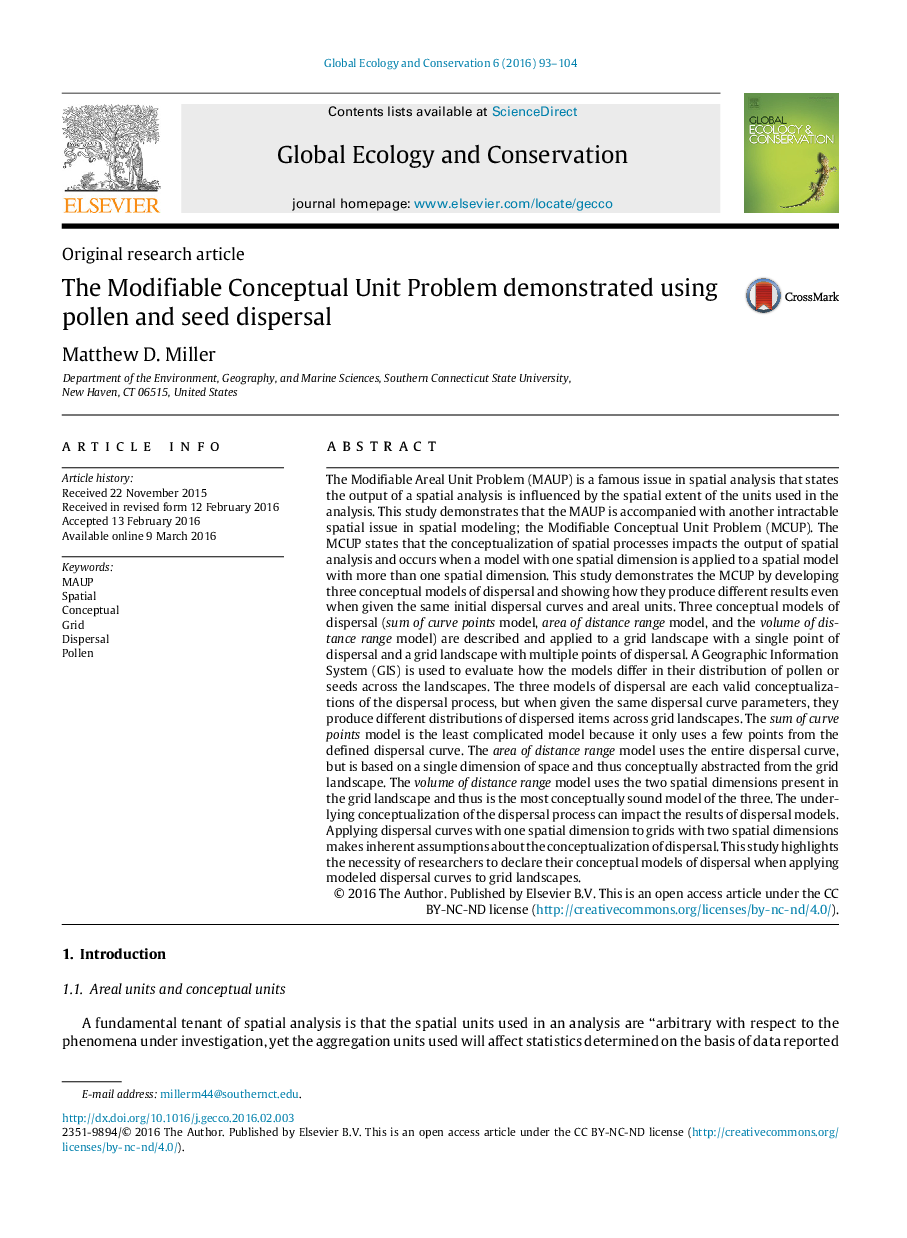| کد مقاله | کد نشریه | سال انتشار | مقاله انگلیسی | نسخه تمام متن |
|---|---|---|---|---|
| 4379638 | 1617661 | 2016 | 12 صفحه PDF | دانلود رایگان |
The Modifiable Areal Unit Problem (MAUP) is a famous issue in spatial analysis that states the output of a spatial analysis is influenced by the spatial extent of the units used in the analysis. This study demonstrates that the MAUP is accompanied with another intractable spatial issue in spatial modeling; the Modifiable Conceptual Unit Problem (MCUP). The MCUP states that the conceptualization of spatial processes impacts the output of spatial analysis and occurs when a model with one spatial dimension is applied to a spatial model with more than one spatial dimension. This study demonstrates the MCUP by developing three conceptual models of dispersal and showing how they produce different results even when given the same initial dispersal curves and areal units. Three conceptual models of dispersal (sum of curve points model, area of distance range model, and the volume of distance range model) are described and applied to a grid landscape with a single point of dispersal and a grid landscape with multiple points of dispersal. A Geographic Information System (GIS) is used to evaluate how the models differ in their distribution of pollen or seeds across the landscapes. The three models of dispersal are each valid conceptualizations of the dispersal process, but when given the same dispersal curve parameters, they produce different distributions of dispersed items across grid landscapes. The sum of curve points model is the least complicated model because it only uses a few points from the defined dispersal curve. The area of distance range model uses the entire dispersal curve, but is based on a single dimension of space and thus conceptually abstracted from the grid landscape. The volume of distance range model uses the two spatial dimensions present in the grid landscape and thus is the most conceptually sound model of the three. The underlying conceptualization of the dispersal process can impact the results of dispersal models. Applying dispersal curves with one spatial dimension to grids with two spatial dimensions makes inherent assumptions about the conceptualization of dispersal. This study highlights the necessity of researchers to declare their conceptual models of dispersal when applying modeled dispersal curves to grid landscapes.
Journal: Global Ecology and Conservation - Volume 6, April 2016, Pages 93–104
